Nosferatu
 for bloody violent content, graphic nudity and some sexual content.
for bloody violent content, graphic nudity and some sexual content.
Reviewed by: Charity Bishop
CONTRIBUTOR
| Moral Rating: | Extremely Offensive |
| Moviemaking Quality: |
|
| Primary Audience: | Adults |
| Genre: | Supernatural-Horror Mystery |
| Length: | 2 hr. 12 min. |
| Year of Release: | 2024 |
| USA Release: |
Christmas, December 25, 2024 DVD: February 18, 2025 |
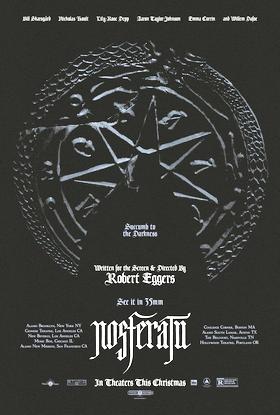

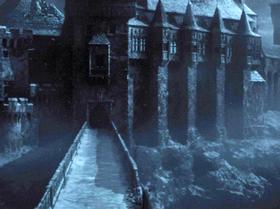
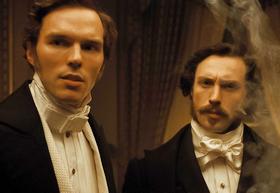
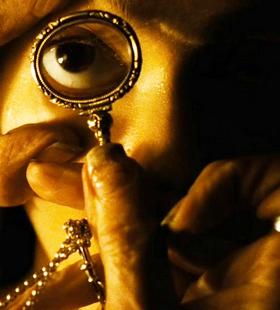
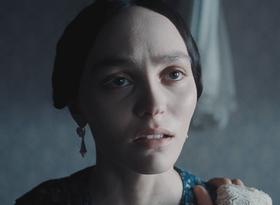
The tragedy of wallowing in spiritual darkness
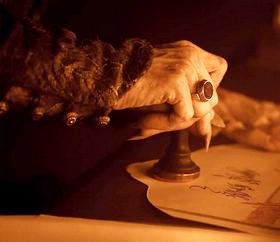
The Occult—What does the Bible say about it?
What does the Bible say about demons?
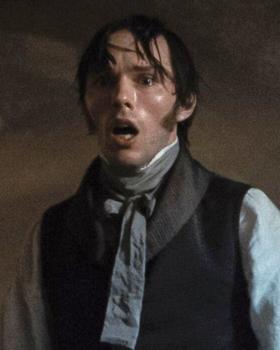
About the fall of mankind to evil and depravity
Film Violence—How does viewing violence in movies affect viewers and families?
Has death always existed? Why does it exist?
What does the Bible say about sorcery?
| Featuring |
Lily-Rose Depp … Ellen Hutter Nicholas Hoult … Thomas Hutter Bill Skarsgård … Count Orlok Aaron Taylor-Johnson … Friedrich Harding Willem Dafoe … Prof. Albin Eberhart von Franz Ralph Ineson … Dr. Wilhelm Sievers Simon McBurney … Knock Emma Corrin … Anna Harding See all » |
| Director |
Robert Eggers |
| Producer |
Focus Features Maiden Voyage Pictures See all » |
| Distributor |
Succumbing to bleak darkness
In 1922, a German director named F.W. Murnau could not get the film rights to Bram Stoker’s novel, Dracula, so he came up with the slightly altered “Nosferatu”. That silent film contains symbolic references to the horrors of WWI (in its death, disease, and rat-infested trenches) and to the occult, thanks to its producer, occultist Albin Grau. Robert Eggers’ “Nosferatu” resurrects the vampire story by staying faithful to the original.
Lonely thanks to her absentee father, young Ellen (Lily-Rose Depp, in an incredible performance) cries out into the darkness for an angel to come befriend her, but when none answers, she opens the invitation to “anyone… or anything.” An ancient vampire called Orlok answers her. He wants to share her mind, body, and soul, and only needs her to say yes. At first, delighted, Ellen agrees… but during a euphoric encounter with him, she sees his true form: a nightmarish corpse, perched on her chest, sucking the life out of her.
Years later, Ellen is happily married to Thomas Hutter (Nicholas Hoult), an ambitious lawyer who receives an assignment from his eccentric boss to travel into the Carpathian mountains and finish the paperwork for the sale of a local home to a mysterious man known as Count Orlok (Bill Skarsgård). Little do either of them know this will turn into a battle not only for their souls, but for the fate of their small town.
The Occult Elements
“Nosferatu” is and isn’t a Dracula story. A lot of its beats follow Stoker’s novel, with changes in the characters’ names and situations. It took a combination of wisdom and faith to defeat Dracula, with Van Helsing employing Christianity against this creature of darkness. But here, Orlok is the resurrected spirit of a Romanian evil sorcerer whose bargain with Satan allows him to reanimate his rotting corpse and drink the blood of the living.
In both versions of “Nosferatu,” the only way to defeat the vampire involves a willing female blood sacrifice (in the occult, this “replenishes the earth”). There are countless references to the occult, including a man communicating with Orlok through a pentagram drawn on the floor and worshiping him (this drives him insane).
When Thomas gets to Romania, he sees gypsies performing a pagan superstition to find a vampire (leading a naked virgin around on a horse, until it stumbles over a vampire’s grave).
Rather than being romanticized, we see Orlok as a demonic succubus—a horrible, rotting corpse dragging itself about his castle, wheezing, striking terror into Thomas, and coming to Ellen in nightmares. He threatens to slaughter everyone she loves or has ever met, unless she surrenders to him in the flesh and allows him to drink her blood.
In an interview, Robert Eggers admitted one of his fears is being drawn “too deeply into the occult.” Given his worldview in this film (God does not exist, only evil; white blood magic defeats evil), that is not surprising. There is a noticeable lack of faith as effective in any of his films; in “The VVitch,” Satan defeats a Puritan family and the bereft daughter becomes a witch. Here, the only person with faith is Ellen’s friend Anna, whose beliefs do nothing to protect her or her family. She falls prey to his demonic visits, and wakes to find her husband unconscious and Orlok murdering her children (after they have said a prayer, “Now I lay me down to sleep / I pray the Lord my soul to keep…”).
The gypsies believe in God, carry around crosses, and tell Thomas Orlok he cannot enter the church, and he and Ellen would be safe here… but it doesn’t matter to the plot.
The film’s version of Van Helsing does not carry around crosses, but pagan symbols, and is into the occult and alchemy. His wisest remark is that the first action against evil is to admit it exists… but in this world, there is no divine authority to defeat it. Only the sun, and a blood sacrifice. Some could argue Ellen’s surrender turns her into an occult Jesus, but Ellen cannot resurrect herself.
Jesus told us that one demon cannot cast out another, and evil can’t be defeated by surrendering to it. Eggers wanted to pay tribute to the beautiful but disturbing imagery from the Middle Ages of “Death and the Maiden,” both in terms of plot and visually. Ellen is an ancient, powerful priestess who does not belong in an enlightened world. Because of its absence of God, the film feels spiritually hollow.
How can we know there’s a God? Answer
What if the cosmos is all that there is? Answer
Is Jesus Christ God? Answer
Demonic Activities
Orlok is a demon-vampire. He comes to Ellen as a spirit that gives her pleasure (at first she enjoyed it, but then it terrified her). Like demons, he cannot enter without an invitation. He needs Ellen’s permission to feed on her. This is Scripturally accurate and lines up with stories from people who came out of the occult. (Some encountered demons while being absent from their bodies; others found demons who wanted sexual congress with them; still more had demons make bargains with them, or who answered their summons).
Christians will see Ellen’s “fits” for what they are—demonic possession. Ellen’s eyes roll back in her head, and her body contorts, shakes, and snaps into unnatural positions. She channels Orlok’s voice in one scene and taunts her husband with him in another.
Production Design
On a technical level, this is one of the more well-directed, impressive films of the last decade. Eggers fills his world with interesting characters, camera work, practical effects, long shots, gorgeous cinematography, and incredible performances. He creates an eerie, unsettling and beautiful world for them to inhabit with muted tones. Thomas’ walk through the woods, in a patch of slanted moonlight, with the snow gently falling around him, before he meets a coach without a driver and is “lifted” into it is exquisite. I’ve never been more impressed with the scenes inside Dracula’s castle.
Thomas is terrified the first time he meets Orlok, and never recovers from his dread. The audience gets to share in his apprehension, as Bill Skarsgård, who becomes invisible in the role, wheezes and groans his way around the castle, sometimes being in two places at once. (Skarsgard also plays the demonic clown in Stephen King’s IT.) Everything about it, from the haunting music to the costumes, are done with total mastery of the screen. I found myself swept up by it, even as my spirit resisted the utter hopelessness and darkness of this godless world.
Offensive Content
It would not be a vampire movie without sexual themes, nudity, and violence. It’s vaguely implied that a man commits necrophilia with his deceased wife before he dies. Ellen’s demonic fits include sexually suggestive movements and heavy breathing. She provokes her husband into an angry round of lovemaking by taunting him (“you will never satisfy me as he does”), and this uncomfortable scene is long.
A naked man turns around, barely covering his groin with a book. We see full frontal male and female nudity three times (all brief). At the end of the film (spoiler), Ellen climbs into bed naked with Orlok, who sucks her blood until they both die (we see her breasts several times, and his shriveled body on top of her).
Violence includes a man biting a bird’s head off, and blood spraying everywhere. He attacks a man in the asylum and rips out part of his neck with his teeth. Orlok loudly gulps blood from people’s hearts. There are many possession scenes, where Ellen spasms, screams, and writhes around. Plague corpses litter the ground. Orlok rips into the neck of a man and blood spurts. A man drives a stake through another man’s heart. People puke up blood, ectoplasm, and saliva, and set corpses on fire to purify their souls. A woman watches as Orlok finishes sucking her children dry and tosses them aside.
Conclusion
Sadly, in secular terms, this may be one of the better production-quality movies of the year. But… it is filled with evil content—extremely dark occultism and depiction of Christ as ineffectual against evil, rather than being the joyous solution. Robert Eggers wanted to create something “different” from most vampire stories, which, for him, meant leaving out God as a solution. As a believer, I felt very spiritually troubled by this dark film.
- Occult: Extreme
- Violence: Extreme and bloody
- Nudity: Very Heavy— Female full frontal, except genitals; lengthy and repeated explicit nude female breasts; repeated upper male nudity; male rear nudity; ravishment by rats
- Sex: Very Heavy— Fornication scenes with accompanying nudity, movement and sounds; woman appears to be sexually touching her genitals (not graphic); necrophilia
- Drugs/Alcohol: Alcohol, tobacco, a drug
- Wokeism: Mild
- Profane language: G*d’s name (4), D*mn (5)
- Vulgar/Crude language: Bloody (3), B*stard
Learn about DISCERNMENT—wisdom in making personal entertainment decisions
 Every time you buy a movie ticket or buy or rent a video you are in effect casting a vote telling Hollywood, “I’ll pay for that. That’s what I want.” Read our article
Every time you buy a movie ticket or buy or rent a video you are in effect casting a vote telling Hollywood, “I’ll pay for that. That’s what I want.” Read our article
See list of Relevant Issues—questions-and-answers.


With Christian compassion, hospitality, and long-suffering, they take in Ellen, and how are they rewarded? They are killed by the demon Ellen evoked in their lives.
Also worthy to note, is how’s for Eggers, The “good guys” of the story, the professor Eberhart played by Defoe, uses occultic chants to combat the evil in this movie instead of using the name of Jesus Christ.
Be warned that the angel names he uses, as well as different names of Jehovah, are not Biblical and most likely are names of fallen angels. I certainly got a check in my spirit when he started calling out these names.
And before the final conclusion when Eberhart is telling Ellen she would have been a high priests Isis in a another life, is again just new age/old age pantheistic “you can become your own savior” type narrative whose whole purpose is to discount the need for Jesus Christ as ones Savior and instead look into yourself as your own god/christ. This is very dangerous and subversive message which I believe is actually the whole reason for Egger’s work in general, to plant this subversive seed in the hearts of unbelievers.
Also, what’s nuts about Ellen being made to be the hero in the end is that she was the one who made a pact with the demon to begin with, gets basically everyone killed in their town and then is heralded as some sort of messiah figure for sacrificing herself. Oh please…
At least the movie is honest to say that evoking and making pacts with the devil is a bad thing and will have terrible consequences.
Overall, if you’re a believer, there is no reason to watch this. Definitely fails the “whatsoever things are lovely… think on these things.” parameter in more ways than to count. Just use my mistake as a warning to you. It’s soul searing content that has no redeeming value.
A24 as a whole, I believe, must be energized by occultic forces as they put out high quality production and narratives, but with a clear anti-christ subversive agenda. And that’s the whole point, for the devil to draw people away from Christ and His redeeming sacrifice on their behalf.
Moral rating: Extremely Offensive / Moviemaking quality: 4½
PLEASE share your observations and insights to be posted here.
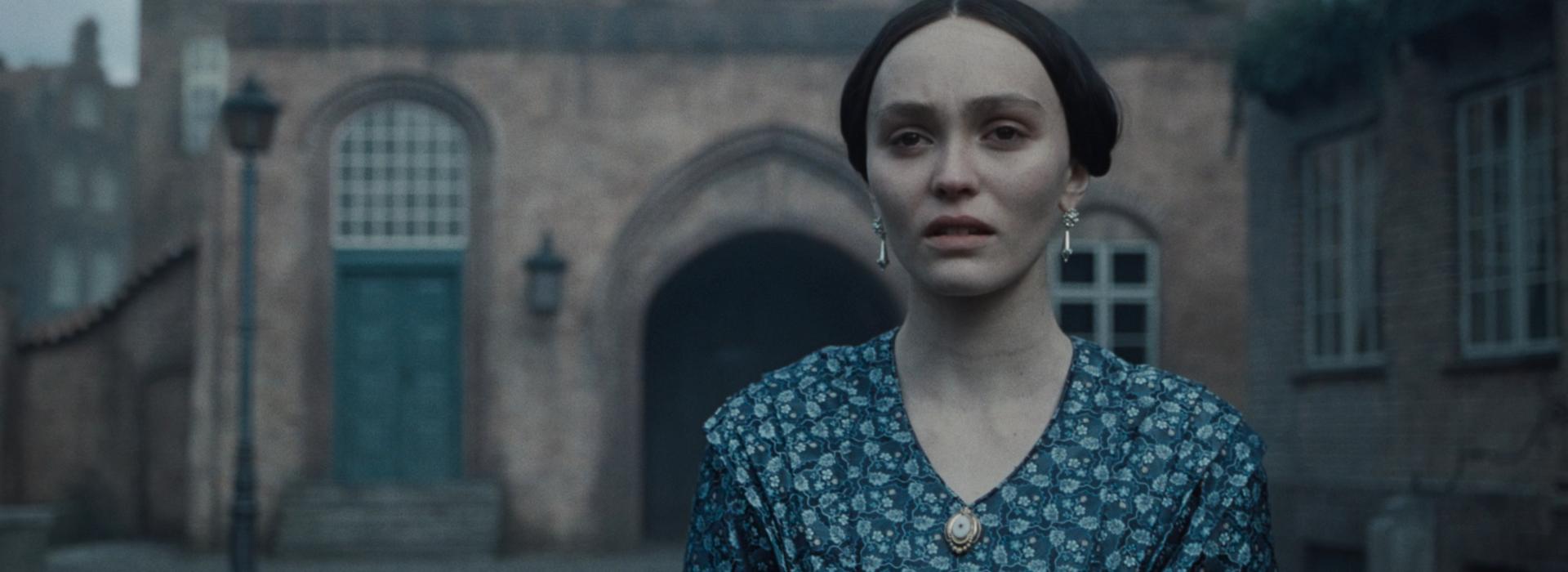

I read the original Dracula novel for the first time last year, because of the Dracula Daily trend that’s been going around for a few years (though I didn’t read the dates in the book on the same days that are written in there). I found it fun, full of thrilling moments and quite a bit of action. Almost all of the good characters in the story were portrayed as Christians, and, although it was portrayed in a kind of exaggerated and silly way, the Christian objects like crosses and communion wafers was an interesting way of showing the power of God being greater than the demonic vampire powers. All in all, a very cool book and I wish I had read it even earlier.
So what does this all have to do with this movie? Well, for some reason (at least from the movies I’ve watched over the past half a year), nobody that makes “adaptations” of this book seem to be able to actually tell the story that’s in the book, to the point that I’m starting to wonder if any of them have actually read the book. It ranges from more mundane changes, like the famous Lugosi Dracula film making the Harkers minor characters (when in the book they’re the main characters), to the most insane of changes, like Coppola’s movie adding an entire “romance” subplot between Dracula and Mina (who may or may not be Dracula’s wife come back to life. Yes, really. That adaptation is a huge mess). It doesn’t help that so many reviews I read online seem to think that what happens in these adaptations are actually what happens in the book as well (which tells me that most of those people also haven’t read the book, or at least haven’t read the same book).
And that brings me to this newest adaptation, which I absolutely refuse to watch. As if it wasn’t bad enough remaking an iconic silent film that didn’t need to be remade (rather than, you know, just adapting the actual book), this new adaptation (from what I’ve read about it) absolutely twists and distorts the story, utterly changing its themes and making it only have a surface-level resemblance to any Dracula ever made, whether it’s the original book or the silent film that it claims to be a remake of. How does it change the story? Well, for starters:
1. In the book, Mina had nothing to do with Dracula wanting to go to the town that the main characters live in. In this adaptation, she apparently summoned Dracula when she was a child and has a psychic connection to him.
2. In this adaptation, Dracula tricks Jonathan into signing a contract that somehow legally ends his marriage with Mina (as if it would be that easy for a demon to break a contract like that which God would have ultimate power over). In the book, Jonathan and Mina actually aren’t married yet when Jonathan meets Dracula, and after he escapes from him they become a happy married couple and nothing that Dracula does before or afterwards does anything to break that.
3. In the book, Dracula is kept away with Christian symbols like crosses. But, as mentioned in the review above, in the movie he is kept away with pagan witchcraft objects (which demons should, logically, actually be attracted to because witchcraft itself is demonic).
4. In the book, Mina, Jonathan, and their friends all work together to track down Dracula and defeat him. In the original silent film of Nosferatu, Mina distracts Dracula from the rising sun by making a heroic sacrifice (sunlight is fatal to vampires in the original Nosferatu). But in this new movie, Mina’s sacrifice is treated more like a pagan ritual which is the “only way” to defeat Dracula, with sunlight alone not being the reason for his death.
I could go on and on. The story is distorted beyond recognition. Some might point out the numerous plot points that are identical in all versions, but this means absolutely absolutely nothing if the actual essence of the story is changed. What the creators of this movie have done is taken a classic good vs. Evil story about Christians defeating a demonic vampire, and turned it into a story where paganism somehow defeats paganism. As Jesus famously said, ‘How can Satan cast out Satan?’
As I’ve said before elsewhere online and in other movie reviews, modern fiction seems to want to create a revisionist narrative where God is absent and paganism is the winner even against paganism itself. And it is most easily visible when comparing great works of fiction to their adaptations later down the line. Run far, far away from this movie.